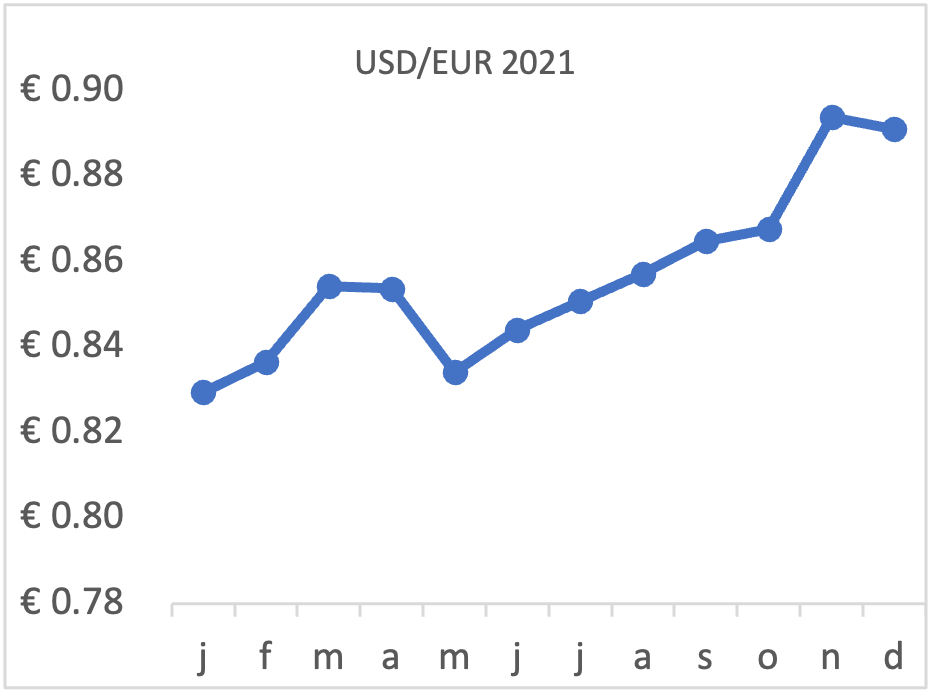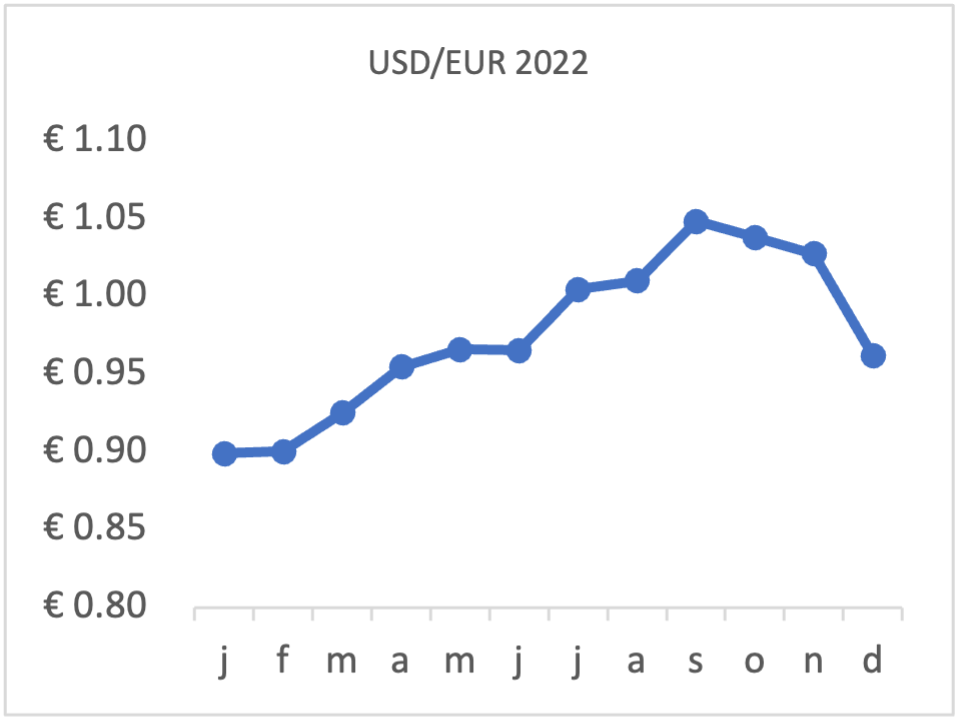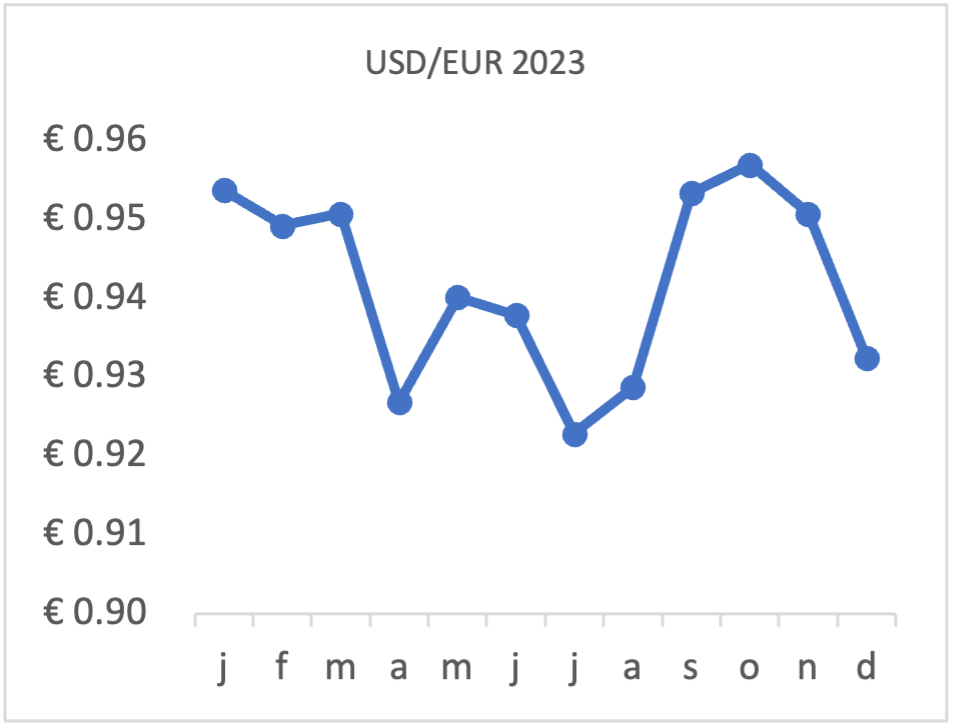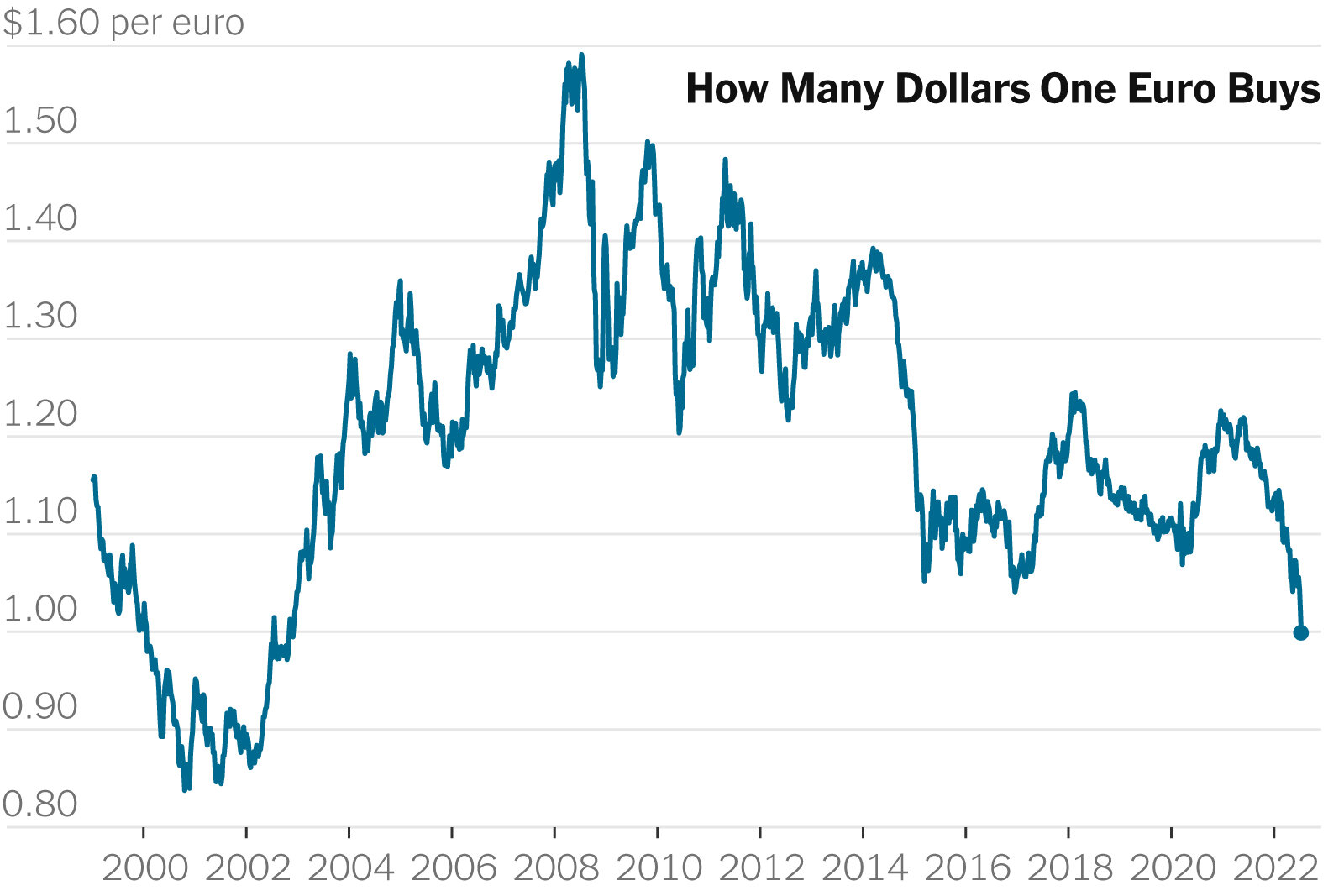FinOps is the practice of managing and optimizing cloud costs across an organization. At TechNative we know what it takes to implement the collaboration between finance, engineering, and business teams to align cloud spending with business value. In this installment we discuss the risk and possible solutions regarding multi-currency of cloud:
FinOps is especially challenging in a multi-currency environment, such as in Europe, where the billing currency of cloud providers may differ from the local currency of the customers. Yet it is little discussed by the FinOps Foundation, if at all.
One of the major cloud providers, AWS, invoices its customers in US dollars, regardless of their location. This poses a significant risk for European customers, who have to deal with the volatility of the exchange rate between the Euro and the Dollar. The exchange rate can fluctuate significantly, the average over the last 5 years, top and bottom exchange rate differences was 10%. The worst year being 2022 with a near 17% difference. This means that the actual cost of cloud services in EUR may vary considerably from month to month, depending on the market conditions.

For example, if a Dutch enterprise (or any of its subsidiaries/departments) budgets 1 million EUR for cloud spend in 2024, and the average exchange rate for the year is 0.8 USD/EUR, then the expected cost is USD 800,000. However, if the exchange rate increases to 0.88 USD/EUR, then the actual cost will be USD 880,000, which is equivalent to 1.1 million EUR. This is a 10% increase in the budgeted amount, which could have a significant impact on the company’s profitability and cash flow.

To mitigate this risk, FinOps practitioners in Europe need to consider the following strategies:
- Monitor the exchange rate trends and forecasts, and adjust the budget accordingly. This may require frequent communication and coordination between the finance and engineering teams, as well as the cloud provider.
- Use hedging instruments, such as forward contracts or options, to lock in a favorable exchange rate for a certain period of time. This can reduce the uncertainty and volatility of the cloud costs, but it may also incur additional fees and complexity.
- Maintain a balance in USD, either in a bank account or in a cloud provider’s credit system, to pay for the cloud services. This can avoid the conversion fees and the exchange rate fluctuations, but it may also expose the company to the risk of currency depreciation.
- Choose a cloud provider that offers billing in EUR, such as Google Cloud Platform or Microsoft Azure. This can eliminate the currency risk altogether, but it may also limit the choice and flexibility of the cloud services.

FinOps in a multi-currency environment is not a trivial problem, and it requires careful planning and execution.
Not that AWS invoicing in USD should eliminate it as an option, but the impact of it should be considered in the larger view of FinOps practice and processes in the company. By adopting the appropriate strategies, FinOps practitioners in Europe can optimize their cloud costs and maximize their business value.
TechNative has the certified FinOps practitioners and professionals, and decade’s worth of experience most important, to help you in this process.


